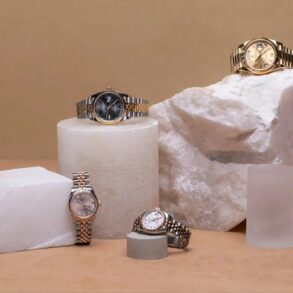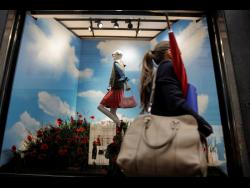You know you want it, but can you justify it? Jessica Beresford puts forward the case for buying that dream handbag.
A recent Christie’s auction of handbags, including rare styles by Dior, Chanel and Hermes, fetched US$4.1 million ($6.8m), setting the record as the highest value of its kind in
Among the lots was an Hermes Kellywood that sold for US$176,400 — a world-record auction price for a particularly rare model, festooned with a geometric pattern inspired by the house’s famous scarf print.
Though sitting at the very high end of the market, the sale reiterates how expensive and lucrative luxury handbags have become. A medium Chanel classic flap bag, for example, now costs US$10,200, up 16 per cent from 2022 and 10 times more expensive than it was in the 1990s, according to Christie’s.
Prices of Birkin bags have drastically increased in the past 10 years, retailing for between US$9000 to US$30,000. And that’s if Hermes even lets you buy one, which is usually dependent on a customer’s relationship with their store (known as the famous Birkin “list”).
/cloudfront-ap-southeast-2.images.arcpublishing.com/nzme/KWOFTKCNUFBXRHS7HOVYCG22WA.jpg)
Though gold has historically been the most valuable and recession-proof asset one can carry, personal luxury goods are becoming increasingly popular as an investment category.
That’s not in the sense of “investment dressing” — a term bandied around by fashion magazines to encourage readers to buy expensive pants — but items such as handbags, watches and jewellery that can potentially increase in value after they’ve left the shop.
“Designer handbags have been one of our fastest-growing categories,” says Jess Mackenzie, Webb’s manager of designer handbags and luxury accessories.
In New Zealand, these often include brands that don’t have retailers locally, including Hermes, Chanel and Bottega Veneta, as well as Louis Vuitton luggage such as the Alzer trunks and the Keepall.
“I have seen that special limited-edition pieces, for example, the Louis Vuitton Christmas lines that often sell out during the pre-sales, tend to retain their value due to the difficulty in acquiring one,” adds Mackenzie.
This November, Christie’s is offering a course, “Collecting Handbags as an Alternative Asset”, which teaches participants to better understand which handbags are likely to appreciate in value through understanding different styles, leathers, shapes and construction, as well as their place in the collector’s market today. The course is being offered in Hong Kong, where some of the world’s most valuable handbag auctions have taken place — including the sale of a rare, diamond-studded Hermes Himalaya Kelly bag in 2021 for more than US$500,000.
/cloudfront-ap-southeast-2.images.arcpublishing.com/nzme/T56QJIRTEVCWJJXS6WFYOU7QDA.jpg)
Webb’s has also seen an increase in its jewellery category, with appreciating items including “large diamonds and coloured stones of top quality”; the auction house recently sold a 3.01 emerald-cut diamond to an investor.
“Stones of this size and quality are likely to increase in value over time as their accessibility becomes reduced and they become more sought after,” adds Mackenzie.
Watches, too, are increasingly being seen as investment items, with pre-owned watch sales hitting US$22 billion in 2021, accounting for nearly a third of the total market, according to BCG. And styles from the biggest brands — including Rolex, Patek Philippe, and Audemars Piguet — continue to fetch eye-watering prices at auction.
“There is even an index for watches now,” says Pie Funds chief investment officer Mike Taylor, noting The Rolex Market Index which tracks the financial performance of timepieces on the second-hand market, comprising the top 30 models by transaction value.
“So [personal luxury goods are] definitely an alternative investment class, but not for the faint-hearted — you need to be very patient and often wait a decade for your investment to go up. It appears to be a more common play for the ultra-rich or for the novelty factor,” he adds.
For those looking to purchase for investment purposes, Mackenzie offers a few tips.
“Look for pieces that appeal to your taste and your requirements. With jewellery, ensure you are taking into account the precious metal specifications, the cut, and quality of the stones. Well-known timepieces of a particular era can also become highly collectable pieces. For designer handbags, look for recognised brands, especially in the case of limited edition pieces which can be difficult to purchase at a boutique due to limited supply. The ultra-rare and “It” bags most often appreciate in value if kept in pristine condition with original box and accessories,” she adds.
Maybe these investments aren’t designed to be carried after all.
Unlock this article and all our Viva Premium content by subscribing to
Share this article:
This post was originally published on this site be sure to check out more of their content.



